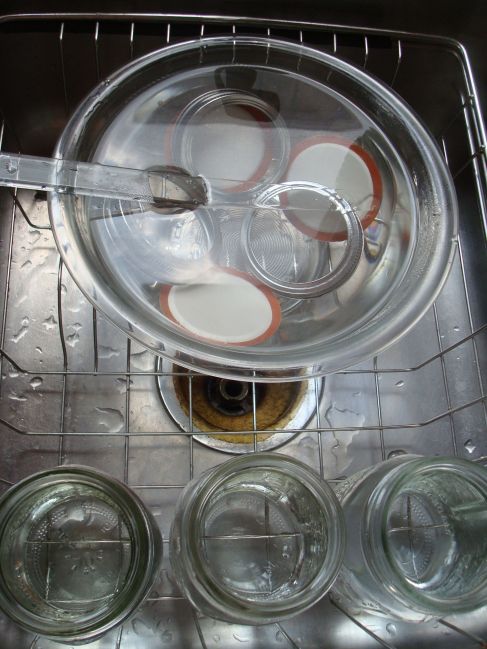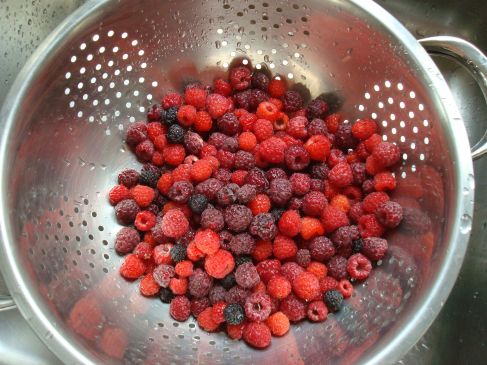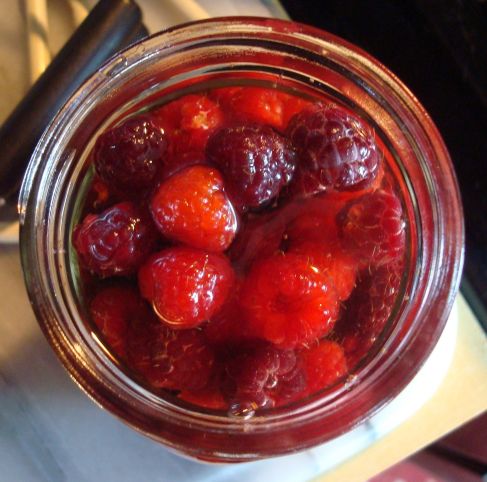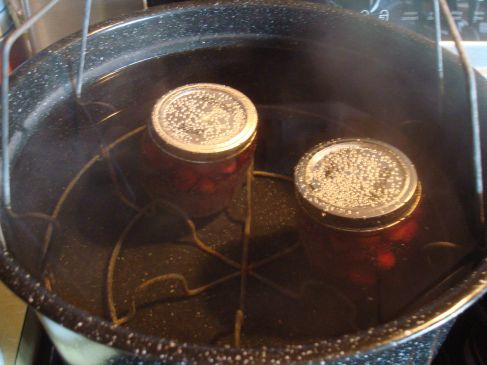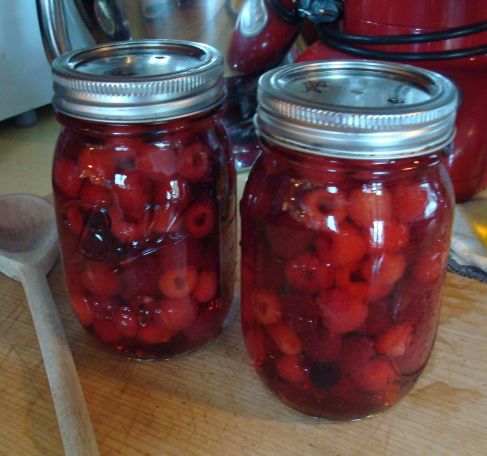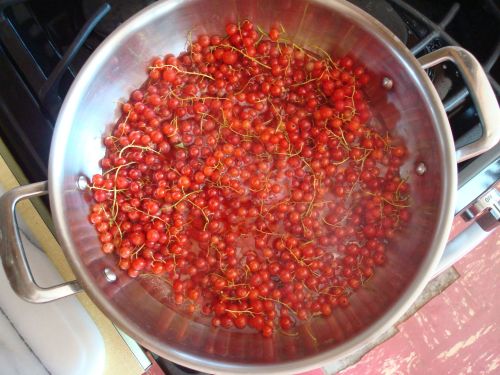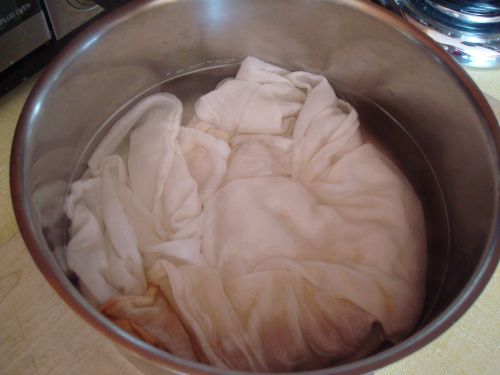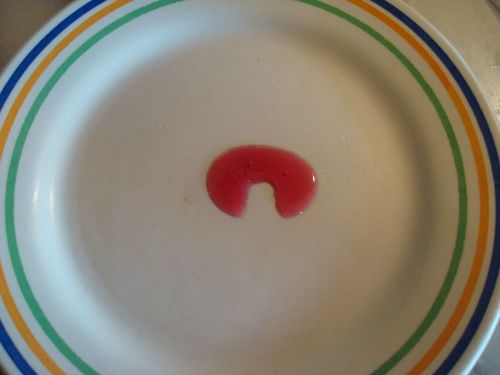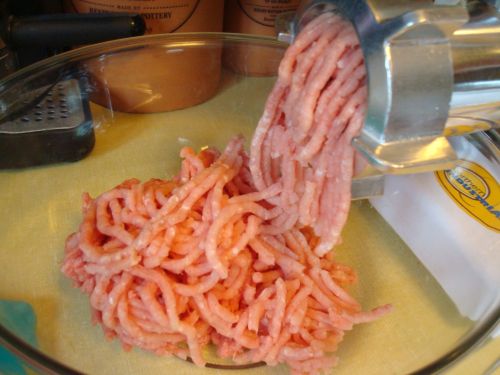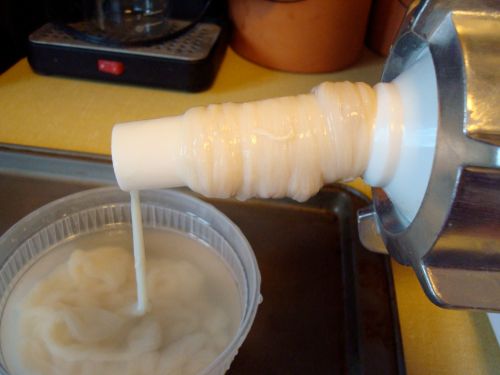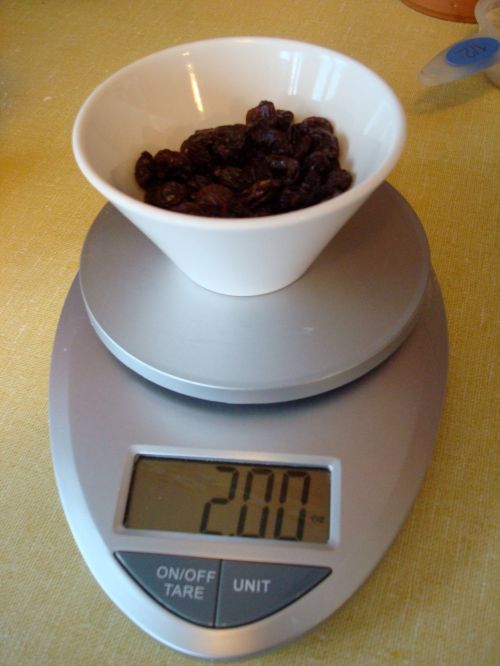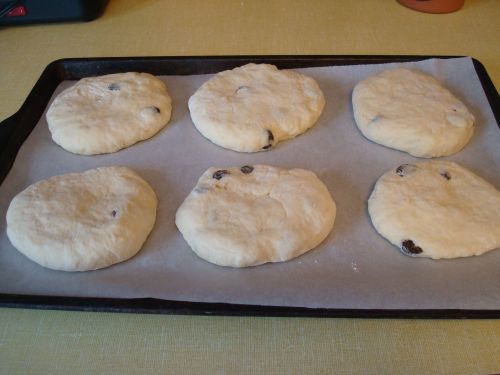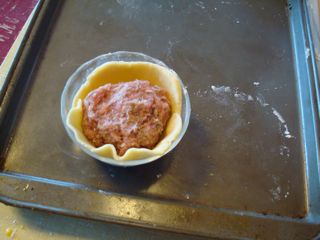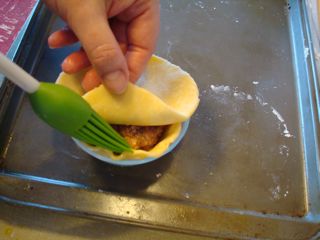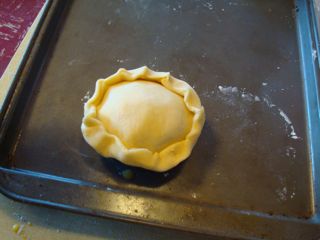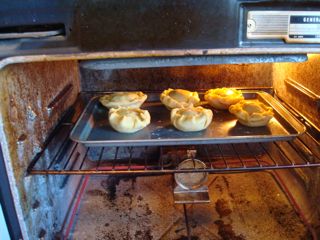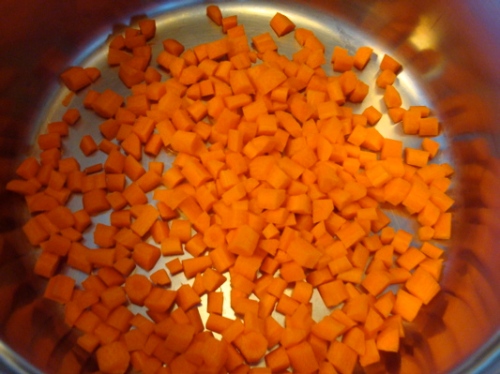This time of year, The River Cottage Preserves Handbook is my constant companion. June was all about strawberry jam. July is about raspberries. Sadly, the weather has been so unusual that the raspberry harvest isn’t quite what I’d expected. We had a warm winter and early spring, followed by a few unexpected frosts, a stretch of glorious weather, and now a heat wave.
Today I picked only about a pound of raspberries–not enough for jam, but plenty to make Liz’s Luscious Raspberries. The recipe couldn’t be simpler. It makes two pint-size jars.
Start by preparing your jars. I wash mine, then fill them with boiling water to keep them hot and sterile until they are ready to fill. I also fill a bowl with the lids, rings, wide-mouth funnel, and that little plastic push-stick thing, then fill to the top with boiling water.
Next, wash the berries very gently and drain thoroughly. I check them over to make sure they are clean and that there are no random hard bits in the berries.
Next make a simple syrup. The recipe calls for 3/4 sugar and 3-1/4 cups of water, but I only needed about half of that. Stir over medium heat until the sugar is dissolved, bring to a boil, then remove from the heat. It will stay hot long enough on its own.
Fill your jars with the berries. I use the plastic push-stick thing to make sure the jars are well filled, but that the berries aren’t so tightly packed that they’re squished.
Pour about 1/4 cup of brandy into each jar of berries. The recipe says you can use gin, vodka, or a raspberry liqueur, but we had brandy on hand from last year’s Christmas cake.
Then fill each jar to within 1/2 inch with the simple syrup.
Don’t they look gorgeous?
Put the lids on the jar and screw the rings on, leaving the rings a little loose to allow steam to escape. then put the jars in a water bath. The water should start off warm (about 100 degrees Fahrenheit), then let them process until the temperature reaches 190 degrees. Process for 2 minutes at 190 degrees.
And here they are, two lovely pints of luscious raspberries. I’m planning to spoon these over French vanilla ice cream.

